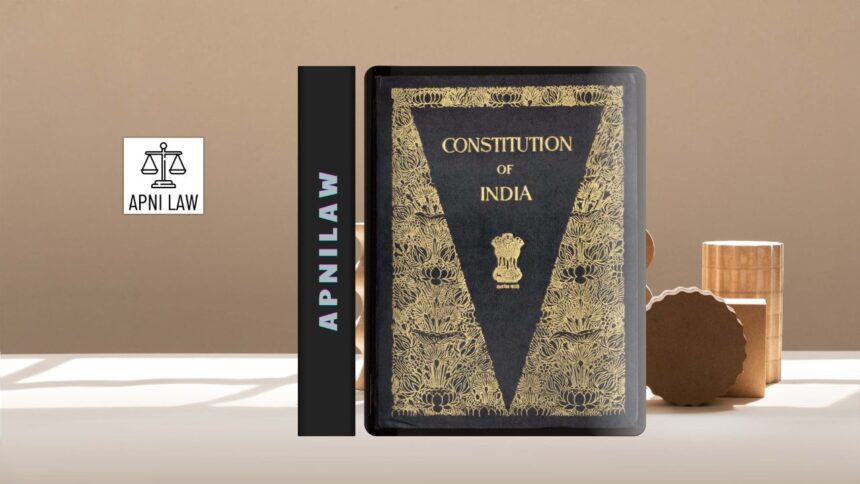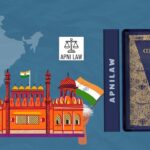The Prime Minister of India holds the most important office in the country’s parliamentary democracy. This office combines both political leadership and administrative control. The Prime Minister functions as the head of the Council of Ministers and serves as the chief link between the President, the Cabinet, and the Parliament. The position carries enormous authority because it represents the will of the majority in the Lok Sabha while also directing the machinery of government. In both political and administrative terms, the Prime Minister shapes the nation’s policies, supervises implementation, and ensures smooth coordination between different branches of the executive.
How Does the Prime Minister Exercise Political Powers?
The Prime Minister stands at the centre of political power in India. By convention, the President appoints the leader of the majority party or coalition in the Lok Sabha as the Prime Minister. This ensures that the person chosen commands the confidence of the House and can provide stable government. Once appointed, the Prime Minister assumes a pivotal role in the working of parliamentary democracy.
As the leader of the ruling party, the Prime Minister plays a decisive role in setting the political agenda of the nation. The government’s policies, legislative proposals, and strategies are influenced heavily by the Prime Minister’s leadership. The office also allows the Prime Minister to act as the chief spokesperson of the government in Parliament and before the people. Whether it is to defend policies, clarify doubts, or explain decisions, the Prime Minister speaks on behalf of the entire Cabinet.
The powers of the Prime Minister also plays a vital role in shaping the internal structure of the Council of Ministers. He or she recommends the names of ministers to the President, decides on the distribution of portfolios, and reshuffles departments when required. This power gives the Prime Minister an enormous ability to ensure loyalty, discipline, and efficiency within the Cabinet. Ministers act collectively, but the Prime Minister’s influence often determines the overall direction of governance.
The office also carries a significant role in advising the President. The Prime Minister can recommend the dissolution of the Lok Sabha and the calling of fresh elections if circumstances demand. In times of political instability, this power becomes crucial in ensuring continuity of governance. Beyond this, the Prime Minister directs the ruling party’s electoral strategies, influences alliances, and guides the political priorities of the nation.
Thus, the political authority of the Prime Minister extends far beyond parliamentary speeches. It directly affects national policies, election campaigns, and the daily working of India’s democracy.
How Does the Prime Minister Exercise Administrative Powers?
The administrative authority of the Prime Minister is equally extensive. As the head of the Council of Ministers, the Prime Minister presides over meetings of the Cabinet and ensures that decisions are taken in a coordinated and unified manner. Since the government works through numerous ministries and departments, the role of the Prime Minister in ensuring harmony among them becomes critical.
The Prime Minister functions as the main channel of communication between the President and the Council of Ministers. All Cabinet decisions are conveyed to the President through the Prime Minister. Similarly, the advice of the Cabinet on appointments, policies, or laws flows through the Prime Minister. In this way, the Prime Minister acts as the bridge between the constitutional head of state and the real executive authority.
Another important administrative power involves appointments. The Prime Minister advises the President on the appointment of key constitutional functionaries such as the Attorney General of India, the Comptroller and Auditor General, the Chief Election Commissioner and Election Commissioners, the Chairman and members of the Union Public Service Commission, and other high-ranking officials. These appointments influence the working of the constitutional machinery and ensure that governance functions within the framework of the Constitution.
In times of crisis or national emergency, the administrative powers of the Prime Minister become even more pronounced. Whether during war, internal unrest, or natural disaster, the Prime Minister directs the collective response of the government. The office coordinates the functions of all ministries, mobilizes resources, and ensures that the machinery of the state responds effectively.
The Prime Minister also chairs several important administrative bodies. These include the NITI Aayog, which frames policies for national development, the National Integration Council, which deals with issues of unity and communal harmony, and the Inter-State Council, which resolves disputes between states and the Centre. By leading these institutions, the Prime Minister shapes the administrative vision of the country.
What Role Does the Prime Minister Play in Shaping Policies?
The Prime Minister not only supervises day-to-day governance but also plays a decisive role in long-term policy formulation. Major economic reforms, foreign policy decisions, and defence strategies often carry the imprint of the Prime Minister’s leadership. Since the Cabinet works collectively, the Prime Minister ensures that policies reflect a coherent vision rather than fragmented decisions.
The Prime Minister’s control over the allocation of portfolios allows him or her to direct ministers toward the government’s priorities. For instance, a government focused on digital transformation may create or restructure ministries to achieve those goals. This flexibility ensures that the administration adapts to emerging challenges.
At the same time, the Prime Minister functions as the symbol of national unity. By addressing the nation during important events or crises, the office provides reassurance and direction. This symbolic leadership strengthens the legitimacy of government actions and builds public trust.
How Does the Prime Minister Influence the Legislature?
Although the Prime Minister is not formally part of the legislature’s presiding authority, the position wields enormous influence over parliamentary proceedings. The Prime Minister announces government policies, answers questions, and clarifies the government’s stance during debates. Since the Prime Minister commands a majority in the Lok Sabha, legislative proposals have a greater chance of passing.
The Prime Minister also decides the legislative agenda in consultation with Cabinet colleagues. Important bills are introduced only after the Prime Minister’s approval. This ensures that the legislature reflects the government’s vision. By influencing both the content and timing of legislation, the Prime Minister strengthens the link between the executive and the legislature.
Why Is the Prime Minister Called the Real Executive?
The Constitution of India provides for a parliamentary system where the President is the nominal head of state and the Prime Minister is the real head of government. This design ensures that the executive authority rests with the elected representative of the people rather than a ceremonial figure. While the President acts on the advice of the Council of Ministers, that advice originates from the Prime Minister.
This arrangement makes the Prime Minister the real executive authority in practice. The Prime Minister controls the Cabinet, guides policy, directs administration, and influences legislation. At the same time, the office provides political leadership to the ruling party and ensures accountability to the people. In this dual role, the Prime Minister functions as both a political leader and an administrative chief.
How Does the Prime Minister Impact National and International Affairs?
The role of the Prime Minister extends beyond domestic politics and administration. As the face of the Indian government, the Prime Minister represents the country at international forums, summits, and bilateral meetings. Foreign policy decisions often depend on the vision and leadership of the Prime Minister. International agreements, trade negotiations, and defence partnerships are guided by the priorities set at the Prime Minister’s level.
Domestically, the Prime Minister also acts as a symbol of stability and unity. During moments of national celebration or tragedy, the Prime Minister addresses the people and conveys the collective resolve of the nation. This symbolic leadership reinforces the idea of the Prime Minister as the central figure in the country’s political and administrative life.
For any specific query call at +91 – 8569843472
Conclusion
The Prime Minister of India combines in one office both political authority and administrative control. Politically, the Prime Minister leads the majority party, sets the agenda, and speaks for the government. Administratively, the Prime Minister directs the Cabinet, coordinates ministries, advises the President, and oversees national institutions. The office carries immense influence over policy, legislation, and appointments. In times of crisis, it provides direction and leadership. Internationally, it represents the nation on the global stage. The Prime Minister is therefore rightly called the fulcrum of India’s parliamentary system, holding together the threads of politics, administration, and national unity.








